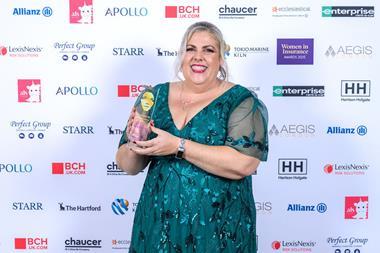Kieran Rigby says the industry already has the tools and the techniques to combat spiralling fraud rates. What we need now is co-operation
In any business, there are many competing priorities. However, in the world of claims handling and loss adjusting, fraud has been catapulted towards the top of the leaderboard.
Fraud has always had an unacceptably high price tag for insurers and their honest customers. However, the economic downturn is giving rise to increased levels of fraudulent claims – and even higher numbers are expected.
The greatest ally to insurance fraud is the public perception that it is a “victimless” crime with insurers frequently viewed as “fair game”. This is reinforced by the modest levels of detection and even lower rates of prosecution. Notwithstanding improvements in this area, from the fraudster’s standpoint, the risk of a punitive outcome is remote in comparison to the potential gain. Some of the recent high-profile prosecutions secured in tandem with groups such as the Insurance Fraud Bureau (IFB) have helped raise awareness but, as yet, this is unlikely to alter the behaviour of the individual fraudster manufacturing a claim.
Those in the front line of claims must remember that fraud crosses all socio-economic divides and all types of commercial activity. The relative wealth of a person or organisation does not preclude them from perpetrating fraud.
We have seen many innovations in the tools and technologies applied to the detection and investigation of claims where fraud is suspected. Each can demonstrate some success if deployed properly. Yet, the overall incidence and cost has remained at fantastic levels.
So what more can be done to improve detection levels and curb the scandalous amounts of money being paid to these criminals?
In reality, the tools required are already available, including cognitive interviewing techniques, fraud investigation triggers, investigators, cross-database interrogation and so on. However, with exceptions such as the IFB and the Claims and Underwriting Exchange, the level of co-operation and information exchange between insurers, loss adjusters and others is not as good as it ought to be.
The establishment of the IFB suggests insurers generally do see sharing on counter-fraud activities as beneficial. While recognising that we need to act within the provisions of the Data Protection Act and related legislation, it must be possible to develop a more cohesive approach across the industry.
There is no easy fix. As an industry, we have the tools, we have the people, we have the burning platform – but there is too little real co-operation at portfolio and case level. Results will emerge on the ground with the deployment of the right tools and people but, most of all, with single-minded purpose across carriers and suppliers.
I can already hear the chorus crying, “We tried it before and it didn’t work”. Perhaps they are correct but, if a definition of insanity is to do the same things and expect a different outcome, our challenge is to present an alternative model that will yield better results. If we don’t, the fraudsters will continue to thrive.
When communities engage and share, innovation flourishes and challenges are frequently conquered. So let us look at how we can all take that to the world of counter-fraud activities. We owe it to the vast majority of customers who are honest, our shareholders and investors, and society as a whole.
Kieran Rigby is chief executive of GAB Robins UK
Hosted by comedian and actor Tom Allen, 34 Gold, 23 Silver and 22 Bronze awards were handed out across an amazing 34 categories recognising brilliance and innovation right across the breadth of UK general insurance.












































No comments yet